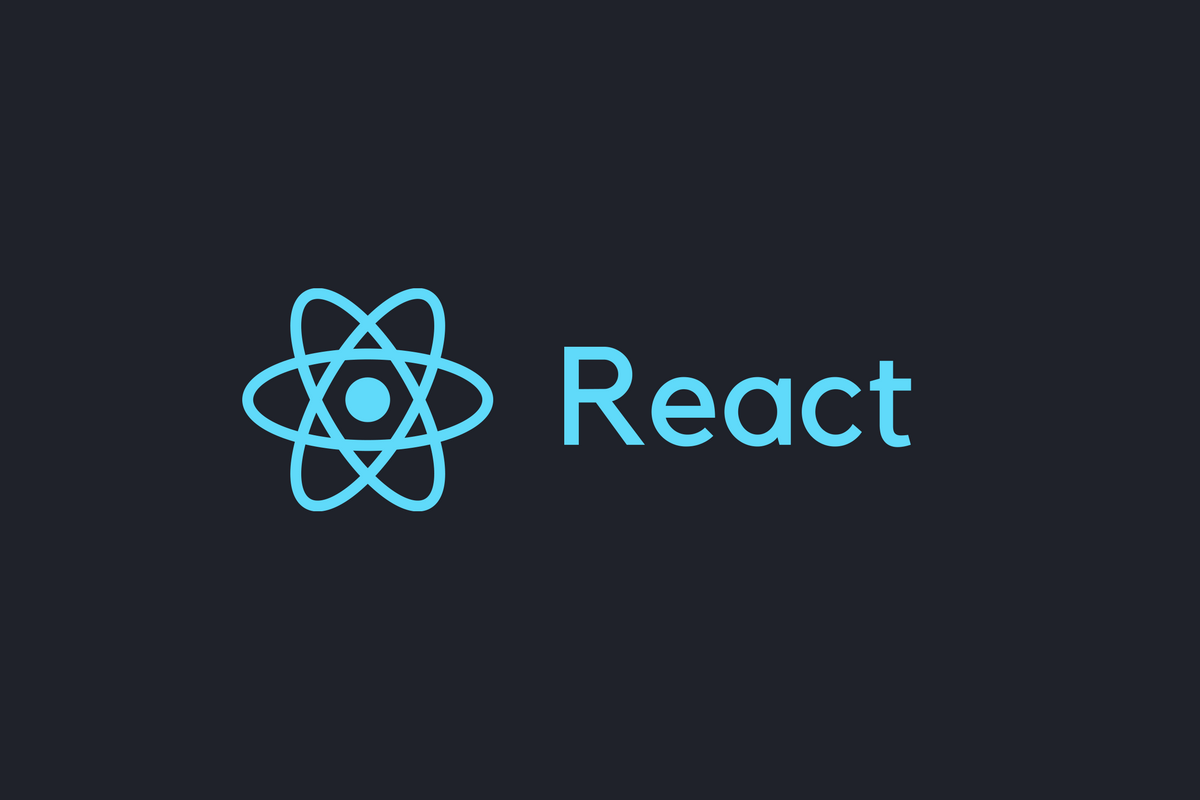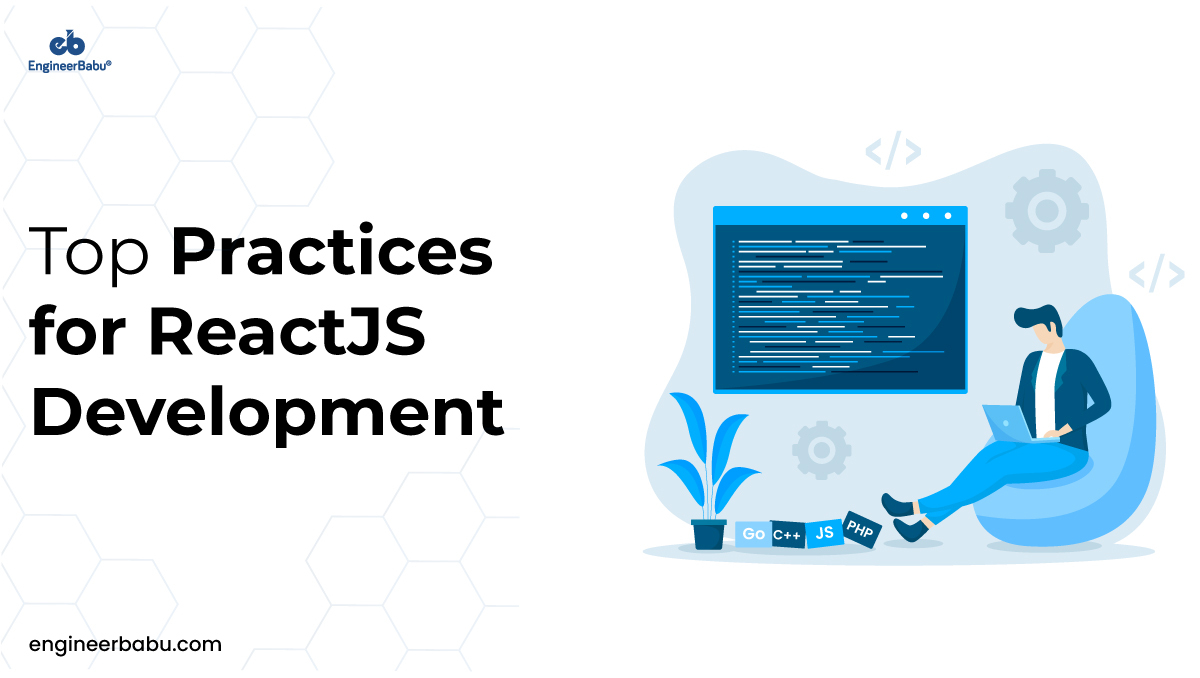The technology is moving in a steadfast direction; hence developers must continuously grab new technologies. If you are a front-end developer and engage in building highly-interactive user interfaces, then working on ReactJS becomes very important. So, to gain good working experience, the best practices for ReactJS development should be followed by developers.
Well, being a developer while working on ReactJS development, it becomes important to be careful and follow the best and essential practices for ReactJS development. These practices will help you as a developer to keep your codes organized in a better manner.
React is the most popular library developed by Facebook, based on JavaScript for building excellent user interfaces. A majority of developers prefer to work with ReactJS library to build beautiful and user-friendly applications. ReactJS allows developers to integrate many exciting components with it. It also allows developers to build their own component and share them with other developers. As a result, ReactJS is the most user-friendly technology in the market among all the new introductions.

Source: Medium Website
Why ReactJS Development?
In the market, there are many JavaScript frameworks and libraries, but React is the most preferred and liked library among developers. ReactJS is the most preferred library because of its ease of working and learning.
It can receive data from multiple sources such as real-time data, initial data, and user input data; the data passes through the dispatcher. Now, the dispatcher forwards the received data to the store, where it ultimately appears for viewing. Now, the view is the part where the user interacts with the application. Hence, whatever the user sees on the browser as the web page is presenting itself to view.
Happenings at the back-end of the framework follow the traditional data flow.
Whenever the data gets added or updated at the back-end, the browser reloads the web page and repeats the complete procedure again. After that, the updated data appears to view for users. But, this traditional method of data flow has a major drawback, i.e., it uses the Document Object Model (DOM). DOM object is created by the browser each time the web page loads.
The DOM can dynamically add or remove data from the back-end. So, whenever the modification is performed, the new DOM gets created for the same page. This multiple DOM creation results in unnecessary consumption of memory and low application performance.
Moreover, DOM manipulation turns out to be very expensive. Hence, the new technology need arises to avoid the issues that occur due to this. Now, ReactJS has been introduced to rescue from this situation.
ReactJS development allows developers to divide the entire application into numerous independent components. ReactJS still uses the traditional data flow, but with some changes in the back-end.
The back-end changes show that each time the data is added or updated in the back-end, ReactJS uses new tactics to manage it. Instead of reloading the complete page, it simply destroys the old page. It then renders the view components with new data or implemented updates and replaces the old view with the new one.
As a result, the wastage of memory due to DOM, React introduced Virtual DOM.
What is Virtual DOM?
Virtual DOM is like any other DOM, which uses a node tree to list the elements and their attributes and content as its Objects and their properties. React renders a function to create a node tree out of the React components. Then it updates the tree based on the mutation in the data model caused by various actions performed either by the system or the user.
The Virtual DOM performs the task in 3 following steps;
- When any data is added or updated, the complete user interface is re-rendered in Virtual DOM representation.
- Then, the difference between the new and the old DOM representation is calculated.
- After calculation, the original DOM gets updated only with the actual changes done. It can also be considered as a patch. The patches are applied only to the affected areas. Likewise, Virtual DOM performs as patches and is applied to the selected elements which are added or updated in the original DOM.
Though ReactJS is easy to learn but to get the desired results, it becomes necessary to follow the best practices for ReactJS development. Let us take a look at the best practices to write better React code in your application.

Source: RawPixel Website
Top Practices for ReactJS Development
-
Keep Components Small and Function-specific
ReactJS development allows its developers to have huge components to execute a number of tasks. However, the best way of designing components is to keep it small so that a single component corresponds to an individual function. Therefore, a single component should render a specific bit of page or modify the particular behavior. Hence, it delivers multiple benefits of keeping small components and are as follows;
- Function-specific ReactJS development can be maintained standalone, therefore makes maintenance and testing easier.
- Such small components can be reused on multiple projects.
- Components that execute and fulfill the general purpose functioning can also be made available to the ReactJS developer’s community.
- It becomes easy to update the small components.
- The small components make it easy to implement performance optimizations.
- Huge components perform typical tasks, and may also become challenging to maintain.
The creation of a concise component and multiple function specific components is solely based on the organization’s requirements. With ReactJS Development, the developers can build as many as components they require and combine them whenever the need arises in the manner they want to meet the same end result.
-
File Organization
File organization is one of the most important practices for ReactJS development. Like many beginners, ReactJS developers fail to organize files properly in React applications. A proper folder and file structure is not just crucial for React application but also for other applications. It helps to understand the flow of the project and in adding new features in the application.
Create an asset folder to save all your top-level CSS, font files, and images. You can also add a helper folder to save other relevant files for different functionalities. Maintain a folder to save all the components of your React project. Along with the sub-folders for smaller components used by the large components. It will make it easier to understand the hierarchy of components through folders and sub-folders.
-
Reusability is Important; Avoid Making New Components Frequently
By following the rule of one function, one component, the reusability of component features, can be achieved. In other words, the developer should avoid building new components for a function, if the component for the same function already exists.
By reusing the existing components in your single or multiple projects, being a developer, you will achieve consistency and contribute to the community. Apart from that, if any component is huge and difficult to maintain, then it’s better to break it up into smaller components as per your requirements.
The ReactJS developers can also even go further and create a button component that can manage icons. Hence, whenever you need to use a button, you are going to have a pre-build component to use. Making it modular will allow developers to cover multiple cases with a single piece of code. So, aim for simple yet abstract enough while building the component.
-
Merge Duplicate Codes- DRY your Codes
To become a good developer, the one of the most important practices for ReactJS development is to keep codes concise and brief as much as possible.
The process of avoiding code duplication is termed as, “Don’t Repeat Yourself” (DRY).
ReactJS developers can follow DRY practice by scrutinizing the pattern and similarities in existing codes. In this manner, you can avoid duplication and eliminate code repetition. Hence, re-writing of codes can make it more concise and avoid duplication.
The concise coding majorly relies on the reusability principle. For example, the addition of multiple buttons that contain icons, rather than adding markup for each button. Hence, the developers can simply use the icon button component to merge the similar codes and avoid duplication.
-
Use CSS in JavaScript
While working on a project, it is common for ReactJS developers to follow all the CSS styles in a single SCSS file. The global prefix use prevents potential name collisions. However, when the project gets into the development or updation phase, this solution may not seem to be a feasible solution.
There are many libraries that support ReactJS developers to write CSS in JavaScript. The most popular and preferred CSS in JavaScript libraries are Glamorous and EmotionJS.
-
Comment only at Required Places
Being a responsible developer, add comments only at places where it is required and meaningful. It not only serves the best practices for ReactJS development, but it also serves two purposes at the same time.
- It will keep the code clutter free and helps to understand its working easily.
- If tried to alter the code at some point or later, can potentially avoid the conflict between codes and comments?
-
Avoid Using Indexes as a Key Prop
Using Index as a value for a Key Prop is not at all among the good practices for ReactJS development.
React uses Key property to track all its elements in the form of an array and due to the collapsing action of the array. It might also result in rendering the wrong information in the wrong place. React does not invest time in rendering duplicates. Hence, the two elements with similar keys, React, consider it as the same and can result in elimination of some elements.
-
Don’t use Props at Initial State
Avoid using Props at initial state practices for ReactJS development. It’s better to use lifecycle methods.
-
Name the Component Relevant to the Function
It is one of the important practices for ReactJS development to name the component after the function it executes. This practice makes a component easily recognizable and relevant to its functioning.
The intelligent naming of components can instantly convey what the component does.
Hence, naming a component after its function makes it more useful for the developer’s community as it becomes easy to discover the component.

Source: RawPixel Website
-
Use Upper Case Letters for naming Component
Other important practices for ReactJS development should be followed is the use of Upper Case alphabets to name the components you are building. For Example, name components as ‘SelectButton’ instead of ‘selectbutton’. It becomes easier to identify and read the name of components so that JSX can identify it differently from default HTML tags.
-
Other Naming Conventions
While working with ReactJS development, being a developer, you would generally be using JavaScript Extension (JSX) files. The component that you create for React should have to be named in the Pascal case or upper camel case. The naming format translates the names without spaces and the capitalization of the first alphabet of every word.
Suppose you are building a function that submits a form, you can name it as ‘SubmitForm’ in upper camel case, instead of ‘submitForm’ or ‘submit_form’.
-
Stateful aspects from Rendering
The components in ReactJS development can be stateful or stateless. The stateful components hold information about the state of the component and provide the relevant context. Whereas, the stateless components have no memory to store or hold information, hence they can not provide context to other parts of the User Interface. They are scalable and reusable and are pure functions.
One of the best practices for ReactJS development is to keep the stateful data-loading logic separate from rendering the stateless logic. It is better to prefer a stateful component to load data and another stateless component to display that data.
The updated version of React v16.8 had a new feature, i.e., React Hooks. It can easily write stateful function-related components. This may also eliminate the requirement of class-based components.
-
Code should be Executable and Testable
Building executable and testable codes is the major priority and the top practices for ReactJS development. It is a good practice to name the test files identical to the source file with a ‘.test’ suffix. Hence, it becomes easier to search for the test files.
The ReactJS developers can also use JEST to test the React code.
-
All Related Files of a Component should be in a Folder
Another important practice for ReactJS development should be followed is to put all the related components in a single folder along with styling files.
It makes the code extraction easier for any project or can even modify the codes whenever required.
-
Use Tools like Bit
One of the top practices for ReactJS development is to organize all the components by using tools like ‘Bit’.
These tools help manage and reuse the codes properly on the requirement. Apart from that, it makes code discoverable by the community and supports team collaboration in building the components. These tools also enable synchronization of code across projects.
-
Use Snippet Libraries
The snippet libraries for codes help to maintain the best and most recent syntax. These libraries also maintain code bug free.
Some of the libraries are, Redux, JS Snippets, ES7 React and many more.
-
Write Tests for all Codes
The adequate testing, regardless of any programming language ensures the addition of any new code integration to the project with the existing code and does not hamper the components and project’s existing functionality. Hence, to maintain the best practices for ReactJS development, the developer should create a ‘Test’ directory within the component’s directory to carry out all the relevant tests.
There are 2 types of tests. First, testing the functionality of components and testing the complete application once it renders in the browser.
Jest emulates HTML DOM to test React components. Jest provides a good and real testing environment with maximum accuracy during the development phase of the project.
-
Follow Linting Rule to Break Long Lines
Linting is the process of analyzing the codes for potential errors while we run the program.
It used for language related problems. But it can also manage multiple issues automatically, especially the particular coding style. The use of the Linting rule in the ReactJS development code helps to keep the codes relatively error and bug free.
-
Initialize Component State without Class Constructor
Initializing state in class components is not a preferred practice. It will also increase the number of lines of codes and develop the code performance issue in ReactJS development.
Hence, initialize the state with class fields instead of with the constructor. This practice in ReactJS helps to minimize the noise in your coding.
Conclusion
Over the years, ReactJS development has evolved a lot and ahead towards its maturity, so that hardly it requires to reinvent any step of the development. It resulted in more complexity in choosing what is going to be right for the project.
Every project is different in terms of its functionality and scalability. So, a single or generalized approach can not be followed every time. Therefore, it is important to plan before the development phase starts.

Source: RawPixel Website
If you are having a project idea or like to develop an application based on ReactJS, then you are at the right platform of EngineerBabu. We had an experienced and qualified team of ReactJS developers and other specialized developers to build an excellent product. For any assistance and project building, you can contact us and get your project on-floor.

